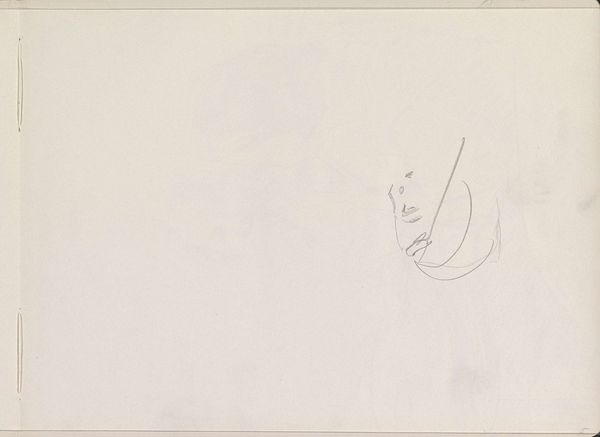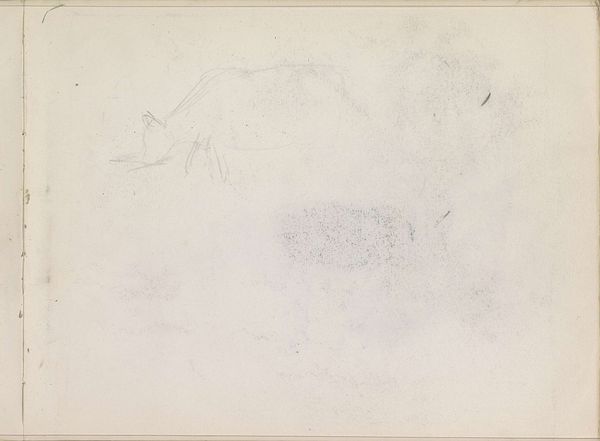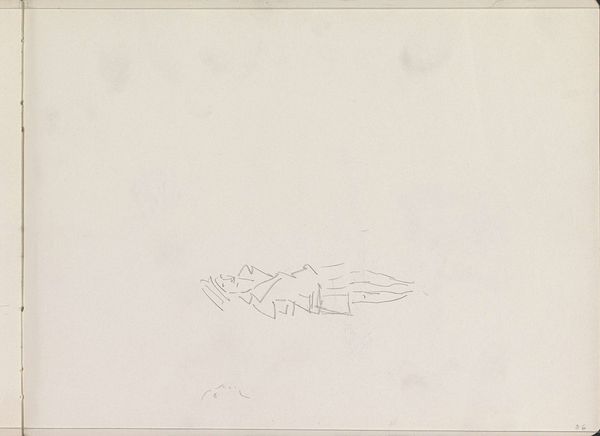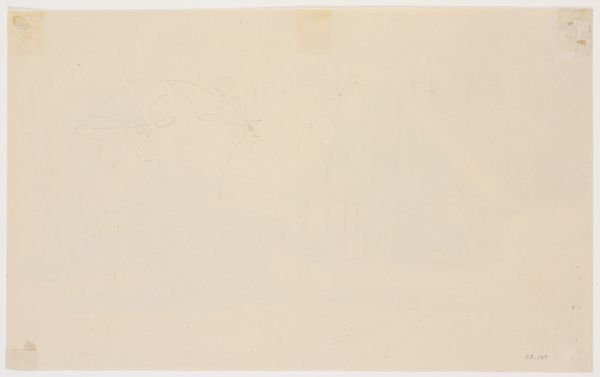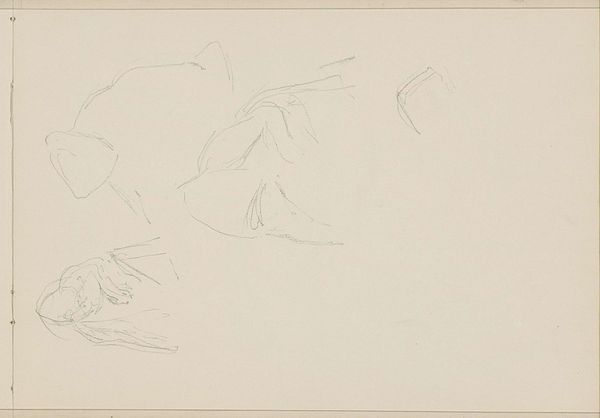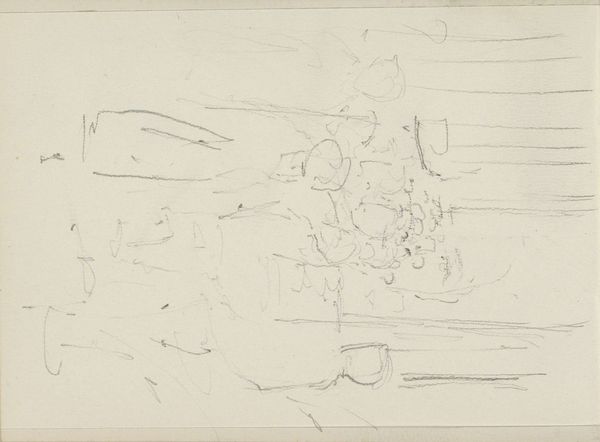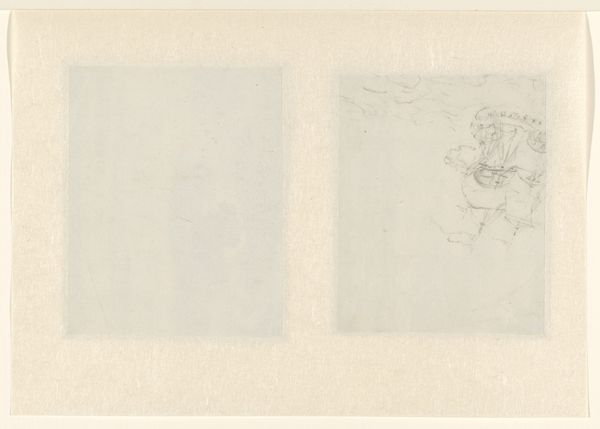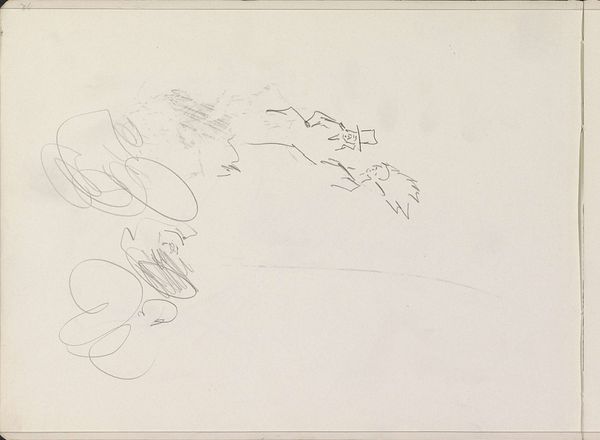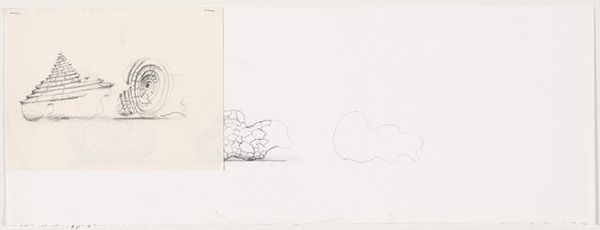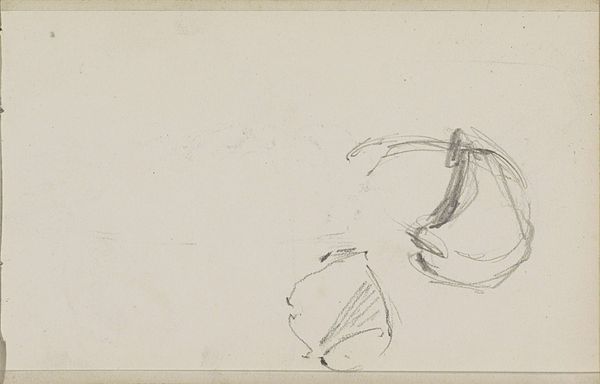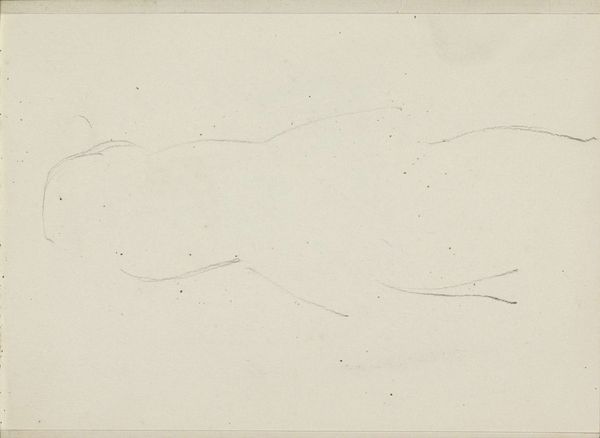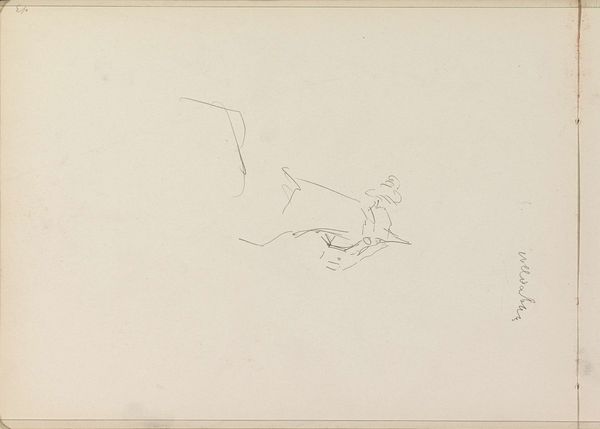
#
amateur sketch
#
light pencil work
#
ink paper printed
#
pencil sketch
#
incomplete sketchy
#
hand drawn type
#
personal sketchbook
#
ink drawing experimentation
#
sketchbook drawing
#
sketchbook art
Copyright: Rijks Museum: Open Domain
Editor: Here we have "Studie," a drawing from circa 1915 to 1925 by Isaac Israels, currently held in the Rijksmuseum. It's a very light, almost ghost-like sketch. What do you see in this seemingly simple piece, considering Israels' wider body of work? Curator: This piece provides a crucial insight into the artist’s process. Often Israels' finished paintings present a romantic vision of modern life, particularly through his depictions of women. However, here we see a stripping away of that final gloss. It allows us to reflect on how that vision of modernity was carefully constructed. Editor: So, it's about revealing the labor behind the image? Curator: Exactly. Think about the context of the early 20th century; burgeoning print culture and the rise of mass media. Artists are increasingly aware of how images circulate and influence public perception. A study like this demystifies that process. Editor: That makes sense. It’s almost like a backstage pass to the creation of a more polished, public-facing image. Are there any particular socio-political elements that come to mind? Curator: Certainly. By leaving these marks visible, Israels is subtly commenting on the increasing transparency and accessibility of art. This relates to debates around artistic authenticity, especially within institutions like the Rijksmuseum, which aims to democratize art viewing. It pushes back against elitist notions of artistic genius. Don't you think it is almost like Israels is speaking to us today, aware that his private experiments will one day be subjected to scrutiny in the very museum that holds it? Editor: That’s a fascinating perspective! It definitely adds another layer to appreciating what appears to be just a preliminary sketch. I'll certainly look at Israels’ more 'finished' works in a different light now. Curator: And that’s the power of these glimpses into the artist’s process: we are compelled to be more attentive about not only the imagery itself but how that imagery gained significance in the public sphere.
Comments
No comments
Be the first to comment and join the conversation on the ultimate creative platform.
